We’re delighted to announce that Nathan Delma has signed on to the Mojaloop Foundation team. As our new deployment specialist, he’ll be working with the Community to enhance Mojaloop.
Nathan is a software engineer who has worked in telecommunications since 2012 and payment systems since 2017. He is also an experienced leader, having successfully worked with R&D teams in the development of new services and feature upgrades.
We recently sat down with Nathan to discuss his career path and what excites him about his new role.
Connect with Nathan on LinkedIn >
Tell us about yourself. What has your career path been and how did you become interested in the Mojaloop Foundation and its mission?
My journey started with my passion for technology and connecting people. Initially, I focused on telecommunication and value-added services, and worked for three MNO companies: TelCaP, Unicom SA and Huawei.
I discovered real-time payment systems in 2017 and went to work for Comviva. At the time, they were the world’s number one provider for real-time money transfer services. I was excited by what I was doing; I liked knowing that somebody could be using the system to do things like send money so that their children could go to school.
In 2022, I was hired by Africell, an MNO with a mobile money service called, “Afrimoney.” One challenge we encountered was integrating with other systems because this required time. It was also hard for the other system owners because — for example — they would want to connect to three MNOs and maybe 15 banks. Doing the work to make that happen could be too expensive.
So I started thinking, how can we make it easier to connect everyone? This is when I started to become interested in payment networks. A colleague told me about Mojaloop, and when I looked into it, I fell in love.
Tell us about your new role. What will your main responsibilities?
There will be two main activities that I will be doing. Firstly, I will be supporting the team for proofs of concept (POCs). When an organization wants to see a working system, I will be a part of the technical team that will be putting infrastructure in place so that people can explore and do testing.
The second thing I’ll be doing is providing support to the Community, which is growing. As more people get involved, they will inevitably have questions and run into issues, and I will be ready to help them.
What are you looking forward to most about your role and what do you hope to accomplish?
The one word that can summarize all of it is “interoperability.” I’m dreaming of a fully interoperable world for developing countries. If I’m able to contribute to giving everyone the ability to transfer money to anyone else, I’ll be happy. When this is achieved, it will open some new opportunities for other kinds of services.
In your opinion, what have been some of the Foundation’s most significant accomplishments to date?
I think the number one achievement is the Community. I was surprised at how strong the Community is — there are a lot of people getting involved and contributing.
The second thing is technical: I was impressed by the quality of the software the Community has produced. It’s enterprise grade, and not all open source projects are able to achieve this. They’ve produced code and a service stable enough and rich enough to compete with proprietary solutions.
The third thing — we don’t see it yet on the ground but it’s coming — will be the impact on financial inclusion. We don’t have a fully commercially deployed system yet, but we’re almost there and I’m very sure that the effect will be massive.
What do you consider to be the biggest challenge in the digital payments landscape?
I think the biggest issue by far is inclusivity and access to the service.
In the last two decades, people have built a lot of solutions for transfers, merchant services, bill payment, and P2P payments. MNOs have done a very good job compared to banks, because very few people have access to banks, but it’s still not enough. It’s still too expensive and therefore not everyone can use these services.
We can also look at it from the fintechs’ perspective. If we could provide interoperability to banks, MNOs, fintechs, and MFIs, we would open a new world of innovation.
This interoperability is very costly because it’s very hard, and I suspect that some organizations are creating silos, perhaps to keep their advantage.
What keeps you excited and motivated to help further the Foundation’s mission? In other words, what gets you out of bed in the morning?
It’s seeing what we are building; the world we are building — one where anyone, even in the poorest village, can have access to any kind of financial services. For now, people have some basic services like P2P, but I dream of making it possible to make more services available to everyone at the cheapest cost.
Is there anything else that you’d like to share with us?
I wanted to recognize the work of all the people who have contributed to Mojaloop, because they have done a very good job. I was impressed of the work you have done and I’m very excited to see the impact it will have in the next five years.

